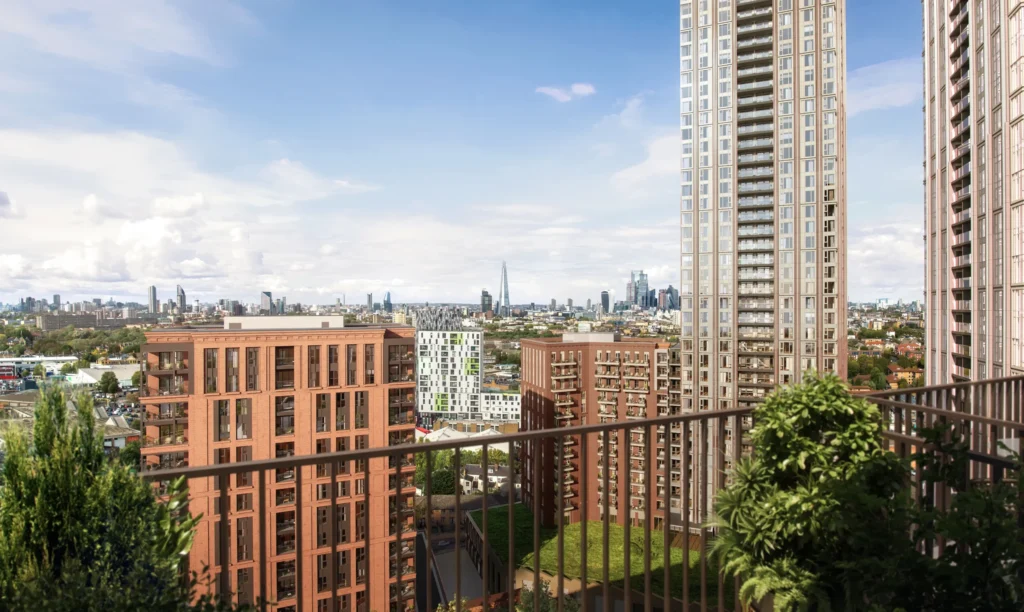London Property Levy: Impact on Homeowners
Labour’s latest proposal for a London property levy has sparked debate, especially as the capital’s house prices remain far above average. Reports suggest that Chancellor Rachel Reeves is considering introducing a levy on the sale of homes worth more than £500,000. This would sit alongside wider reforms to stamp duty and council tax. However, the existing rates for second homes will remain unchanged.
While the threshold may seem high for much of the country, Londoners could find themselves disproportionately affected. The average property price in the capital is currently just under £667,000, according to data from Rightmove. In other words, a significant proportion of homeowners in Greater London could be pulled into the scope of the new levy.
Rising Concern Among London Sellers
 Property experts argue that the move could create new challenges for those already struggling to sell in the capital. Compare My Move, a UK-based removals comparison platform, has tracked a steady rise in the number of residents leaving London. According to its quarterly figures, 34% of movers left Greater London in the third quarter of 2024. By the same period in 2025, that figure had climbed to 39%.
Property experts argue that the move could create new challenges for those already struggling to sell in the capital. Compare My Move, a UK-based removals comparison platform, has tracked a steady rise in the number of residents leaving London. According to its quarterly figures, 34% of movers left Greater London in the third quarter of 2024. By the same period in 2025, that figure had climbed to 39%.
Dave Sayce, co-founder and managing director of Compare My Move, has expressed concern about the direction of the housing market. He notes that Londoners have already been forced to cut asking prices, yet values remain well above the proposed threshold.
Sayce warns that if the levy is applied as suggested, it could deepen the existing trend of outward migration. He predicts that the proportion of sellers leaving London may exceed 40% once the new policy takes effect, putting additional strain on the capital’s housing market.
London Property Levy and Price Gaps
One of the most pressing concerns is the potential creation of a two-tier property market. Buyers may shy away from homes priced just above the £500,000 mark, fearing that future gains will not be enough to offset the new levy.
This could result in what Sayce describes as a “price gap” between homes selling comfortably below the threshold and those selling well above it. Properties hovering around the £500,000-£600,000 range may therefore prove the hardest to shift.
At present, the government has not clarified whether the levy will apply to the full value of a property or only the portion above £500,000. This detail could prove crucial in determining whether the reform acts as a modest adjustment or a major financial obstacle for London homeowners.
Regional Disparities: A Tale of Two Markets
A recurring theme in the debate is the regional imbalance of UK house prices. Outside of London and the South East, the average property price remains far lower than £500,000. Consequently, many families in the Midlands, the North, and Wales would not feel the impact of the new levy at all.
This uneven distribution fuels the argument that the proposed reform amounts to a “London tax”. Without regional adjustments, critics suggest that the levy could accelerate the trend of professionals and families leaving the capital in search of more affordable housing options.
London Property Levy: Industry Reactions
The property sector has offered mixed responses to Labour’s plans. Professional body Propertymark has urged careful consideration. Timothy Douglas, its head of policy and campaigns, welcomed the discussion around reform but stressed that any changes must support first-time buyers and encourage broader homeownership.
Douglas pointed out that stamp duty, in its current form, remains one of the biggest barriers to mobility in the housing market. Reducing the financial burden on buyers, he argued, would likely stimulate transactions and contribute to economic growth. However, he emphasised the need for a system that reflects the very different price points across the country.
In contrast, ASK Partners chief executive Daniel Austin took a more critical view. He dismissed the levy as a “short-term fix” that would do little to stabilise the property market or strengthen long-term economic resilience. Austin argued that without deeper reforms, such measures are unlikely to close the public finance gap. Furthermore, they cannot address structural weaknesses in the housing sector.
The Bigger Picture: What Happens Next?
 As with many new fiscal policies, the devil will be in the detail. Much depends on how the government chooses to implement the levy. If it applies only to the portion of a home’s value above £500,000, the impact may be softened. If, however, it covers the entire sale price once the threshold is crossed, the consequences for London’s housing market could be more severe.
As with many new fiscal policies, the devil will be in the detail. Much depends on how the government chooses to implement the levy. If it applies only to the portion of a home’s value above £500,000, the impact may be softened. If, however, it covers the entire sale price once the threshold is crossed, the consequences for London’s housing market could be more severe.
What is certain is that Londoners, more than any other group, will be watching closely. For sellers already grappling with falling demand and high supply, an additional cost could prove to be the tipping point.
London Property Levy for Buyers and Sellers
For sellers, the immediate concern is downward pressure on asking prices. The introduction of the tax could force many to accept lower offers simply to attract buyers. For prospective buyers, particularly those aiming for properties near the threshold, uncertainty could lead to hesitation and slower transactions.
Meanwhile, buyers seeking homes priced well under £500,000 may gain a stronger position. Additionally, demand is shifting toward properties unaffected by the levy. This could, however, drive up competition in lower brackets, potentially squeezing out first-time buyers.
Conclusion: A Turning Point for London Housing?
Labour’s proposal for a property levy on homes valued above £500,000 represents one of the most significant shifts in housing taxation in recent years. While it may be framed as a progressive step to rebalance the market, the potential regional disparity raises serious concerns.
For many Londoners, where average prices far exceed the national norm, the tax could create yet another barrier in an already difficult market. Unless designed with regional variations in mind, the levy risks deepening existing challenges. Moreover, it could accelerate the exodus from the capital.
As the debate unfolds, both policymakers and industry voices agree on one point: reform is necessary. The real question is whether this new measure will solve more problems than it creates.




